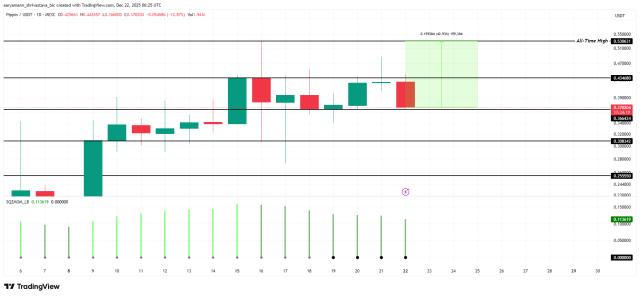
Globally, especially in the US, macrofinancial conditions have undergone a rapid and dramatic turnaround.
US inflation data has risen, while consumer confidence has fallen to a 15-month low, causing traders to start pricing in expectations of a "US economic recession", driving the three major US stock indexes to quickly fall to around their 120-day moving averages.
Capital has initiated risk-off operations, with US 10-year Treasury yields falling rapidly and gold also showing signs of topping out.
Affected by the linkage with US stocks, BTC, which had been building up momentum to surge, broke through its support and plummeted in the last week of February, experiencing the largest drawdown and the largest loss week of this cycle.
EMC Labs believes that this market situation is essentially a payback of the "Trump trade". Based on the logic of self-adjustment of US policies and the long-term bullishness of the crypto market, we believe that BTC is facing a good opportunity for medium-to-long-term allocation, and can cautiously increase long positions in a step-by-step manner.
Macrofinance: Expectations of a "US recession" drive the market to price downwards, with continued pressure in the medium-to-short term
The economic and employment data released by the US government in February, as well as the chaos caused by Trump's tariffs, have become the two core factors influencing the recent trends in macrofinance and the crypto market.
On February 7, the US Bureau of Labor Statistics first released the core employment data, with the seasonally adjusted non-farm payrolls for January at only 143,000, significantly lower than the expected 170,000. The unemployment rate was 4%, slightly lower than the expected 4.1%. The significant contraction in non-farm payrolls has begun to exacerbate market expectations of a US economic recession.
The CPI data released on February 12 showed that the January CPI monthly rate reached 0.5%, far higher than the expected 0.3% and also higher than the 0.4% in December last year, driving the annual rate to exceed the expected 2.9% to reach 3%. Since then, US inflation data has rebounded for three consecutive months, making the market firmly believe that the Fed has more than enough reason to postpone the timing of rate cuts. Even if there are expectations of an economic recession, it is unlikely to make the Fed change its decision.
On February 21, the University of Michigan released the US consumer confidence index for February, with the final value at 64.7, lower than the preliminary value of 67.8, falling to the lowest point in 15 months. The continued low consumer confidence will inevitably be transmitted to the corporate side.

University of Michigan Consumer Confidence Index
Combined with the previous negative information, this data that greatly exceeded expectations ultimately shattered market confidence. On that day, the three major US stock indexes all experienced significant declines.
After two consecutive years of substantial gains and reaching historical highs, the US stocks continued to decline significantly in the week following February 21 (Friday), erasing all of this month's gains and continuing to fall. The Nasdaq fell 3.97% for the month, the Dow Jones fell 1.58%, the S&P 500 fell 1.42%, and the small-cap index RUT 2000 fell 5.45%. Both the Nasdaq and the S&P 500 fell below their 120-day moving averages.
For traders, the continuous rebound in inflation and the potential deterioration of the employment situation have brought the shadow of an "economic recession" again, and reducing long positions may be the best choice.
The crisis does not end here. In addition to the deterioration of economic and employment data, Trump's chaotic and inconsistent decisions on tariff policies have also made the market feel confused and pessimistic.
In January, Trump signed the "America First Trade Policy" memorandum, and at the end of the month announced a 25% tariff on goods from Mexico and Canada, and a 10% tariff on goods from China (already implemented). He then announced a one-month postponement of the tariff hike on Canada and Mexico, but by the end of the month he directly announced that the 3% tariff would be implemented on March 4, and an additional 10% tariff on China.
Previously, the market viewed Trump's tariff policy as a political bargaining chip, but now it is quickly being implemented and has begun to become an important factor driving up inflation. This may have exceeded market expectations, making traders increasingly pessimistic.
The only thing that could have a positive impact on inflation and rate cuts, the "Russia-Ukraine negotiations", progressed well for most of February, but on the last day of the month, the two presidents had a dramatic conflict at the White House press conference, causing the planned mineral agreement to fail. European leaders have vowed to support Ukraine, and the rift between the US and Europe will continue to deepen. The "Russia-Ukraine war" that was already a done deal has encountered new twists and turns, and it is unlikely to end in the short term. At this point, the expectation of ending the war and increasing oil production to reduce inflation has been greatly discounted.
Since November last year, the "Trump trade" has been based on the expectation of strong economic growth. Now, with the deterioration of employment data, persistent high inflation, and the exacerbation of inflationary expectations by tariffs, the market's expectations have reversed, and the pricing of the "economic recession" has been triggered. Based on this logic, the decline of the three major stock indexes may just be the beginning.

US 10-year Treasury Yield (daily)
Since mid-January, the yield on the US 10-year Treasury bond has continued to decline, falling from the highest 4.809% to 4.210%. The significant change in the "pricing anchor" reflects the capital market's substantial downward revision of expectations for an economic recession.
Accompanied by the rebound in inflation, signs of economic downturn, and the sharp declines in the stock market and the 10-year Treasury yield, the market's expectations for Fed rate cuts this year have started to rise again, from 1 time to 2 times. Technically, the Nasdaq and S&P 500 have both fallen below their 120-day moving averages. Based on the current severe situation, the market has increased its rate cut expectations, and if it does not receive a positive response, the short-term may continue to see further declines.
Crypto Assets: The "Trump bottom" has been breached, presenting a good medium-to-long-term allocation opportunity
In February, BTC opened at $102,414.05 and closed at $84,293.73, with a high of $102,781.65 and a low of $78,167.81, down 17.69% or $18,113.53 for the month, with a volatility of 24.03%. It has experienced a maximum drawdown of 28.52% from the high, recording the largest drawdown of this cycle (since January 2023).

BTC price trend (daily)
And the monthly decline was concentrated in the last week, with the rapid and violent sell-off causing the market to enter a state of extreme panic. Corresponding to the largest cycle decline, the Fear and Greed Index fell to 10 points on February 27, the lowest point of this cycle, approaching the 6 points during the LUNA collapse in the previous bear market cycle.
Technically, the "Trump bottom" (purple area in the chart above) has been effectively breached, which also echoes the US stock market's payback of the "Trump trade". The "first upward trend line" and "second upward trend line" that EMC Labs previously focused on have both been quickly broken in a short period of time. By the end of the month, the BTC price closed around the 200-day moving average.
In addition to the linkage with the US stock market, the cycle-level sharp sell-off in the crypto market this month is also related to negative events within the market.
On February 14, the President of Argentina, Javier Milei, posted on the X platform to promote the MEME coin Libra, triggering a speculative frenzy and pushing its market cap to $4.5 billion. Subsequently, the creator withdrew the liquidity from the trading pool, causing the coin price to crash rapidly, resulting in heavy losses for investors.
On February 21, suspected North Korean hackers exploited a technical vulnerability in the Bybit exchange to steal over 400,000 ETH and stETH, worth over $1.5 billion, the largest attack in crypto history in dollar terms.
On February 23, the Infini contract was attacked, with stolen funds exceeding $49 million.
Here is the English translation:Furthermore, on March 1, the unlocking of SOL tokens due to the FTX bankruptcy liquidation will reach 12.2 million, with a total value of only $2 billion. The unlocking scale will reach 2.29% of the total SOL issuance, driving the SOL price to drop by more than 50% at the highest in the weak market background throughout the month.
EMC Labs believes that the largest decline in the crypto market this week was directly caused by the decline in the US stock market driven by expectations of an economic recession, which can also be understood as the pricing of the "Trump trade" reversal. Based on the decline in US stocks, BTC could theoretically drop to around $73,000, but considering that the Trump administration's rise to power has a much greater impact on BTC's fundamentals than the US stock market, the probability of this theoretical downside low being realized is relatively low. The cycle is still ongoing, and based on the logic of US policy self-adjustment and the long-term bullishness of the crypto market, we believe that BTC is facing a good opportunity for medium- and long-term allocation, and can be cautiously and gradually long.
Funds: Over $3.2 billion outflows from BTC Spot ETF channels, the direct cause of the decline
Accompanying the cooling of the "Trump trade" sentiment, the inflow of funds into the crypto market in February slowed down significantly. This slowdown in inflows and the price decline have been interacting, ultimately leading to the breakdown and plunge of the BTC price after lingering around the $96,000 level in the last week of February. The scale of fund inflows in February decreased significantly to $2.11 billion.

Crypto market fund flow statistics (daily)
Looking into the internal classification of funds, EMC Labs found a divergence in attitudes between stablecoin funds and BTC Spot ETF channel funds. The stablecoin channel saw inflows of $5.3 billion for the whole month, while the ETF channel saw outflows as high as $3.249 billion.

Crypto market fund flow statistics (monthly)
In previous reports, we have pointed out multiple times that BTC Spot ETF has already grasped the medium- and short-term pricing power of BTC, so the BTC price trend has shown a high correlation with the US stock market trend.
This month, the outflow of over $3.2 billion from the BTC Spot ETF channel has become the most direct external cause of the decline, setting a record for the largest single-month selloff since its listing. The subsequent trend of BTC will also mainly depend on the improvement of US economic expectations and the inflow of funds to the BTC ETF Spot channel.
Secondary Selloff: Blood-stained chips come from the short-hand group
Since the launch of the secondary selloff in early October 2024, 1.12 million BTC chips have shifted from long-hand holders to short-hand holders. We see the secondary selloff as a necessary condition for the end of a bull market cycle, with the underlying logic being that the growth of active BTC holdings to a certain extent will drain liquidity, leading to the complete destruction of the upward trend.
Examining the consolidation and sudden plunge in February, the long-hand group maintained an extremely restrained state, selling only 7,271 BTC. In fact, the existing long-hand group has long ignored the price range of the "Trump bottom" (between $89,000 and $110,000), choosing to hold and wait for the price to rise.
In the last week of February, the blood-stained chips came from the short-hand group. According to on-chain data analysis, the short-hand group held firm until February 24, and the breach occurred on the 25th, with the on-chain short-hand group alone realizing $255 million in losses that day. This was the second largest loss day of the current cycle, second only to August 5, 2024 (on-chain loss of $362 million). Historically, the market has often seen a stage bottom after the short-hand group experiences similar large-scale losses.

Statistics on on-chain losses of long and short-hand groups
In-depth on-chain analysis shows that since February 24, the BTC holdings in the $78,000 to $89,000 range have increased by 564,920.06 BTC, while the holdings in the "Trump bottom" range ($89,000 to $110,000) have decreased by 412,875.03 BTC.

BTC price distribution statistics
The "Trump bottom" range was forged between November last year and February this year, and the holders in this range are typical short-hand groups. The selloff of blood-stained chips by the short-hand group, in an attempt to construct a medium-term bottom, has also solidified the $73,000 to $89,000 range where there are relatively fewer chips.
Conclusion
In the January report, we emphasized that "the biggest external uncertainty comes from the chain reaction formed by the expectations of rate cuts and liquidity supply after the implementation of Trump's economic policies, and if the liquidity is constrained, the volatility will rise significantly".
This concern has now become a reality.
According to our previous analysis, the blood-stained chips come from the short-hand group, while the long-hand group has quietly slowed down their selling and is holding and waiting for the price to rise. EMC Labs believes that the current bull market is only in a consolidation state, not a bear market.
We believe that the largest BTC pullback event of this cycle that occurred in February was caused by the massive outflow of BTC Spot ETF funds due to the downward repricing of the "economic recession expectation" in the historically high US stock market, and the turning point will also come from the turnaround of expectations in the US stock market and the trend rebound.
With a relatively stable internal structure, BTC and the crypto market are still operating within the cycle, and the short-term price decline presents a good opportunity for medium- and long-term allocation.
What needs to be observed carefully is the trend of the US macroeconomy, market expectations, and the Federal Reserve's attitude towards restarting rate cuts.
EMC Labs (Emerging Lab) was founded in April 2023 by crypto asset investors and data scientists. It focuses on blockchain industry research and Crypto secondary market investment, with industry foresight, insight and data mining as its core competitiveness, committed to participating in the thriving blockchain industry through research and investment, and promoting blockchain and crypto assets to bring benefits to humanity.
For more information, please visit: https://www.emc.fund








